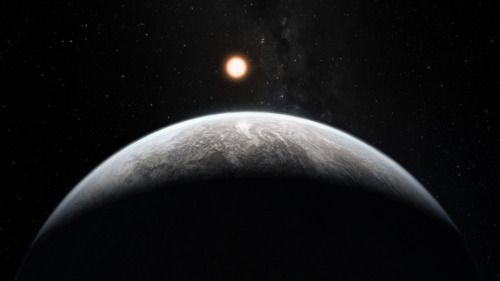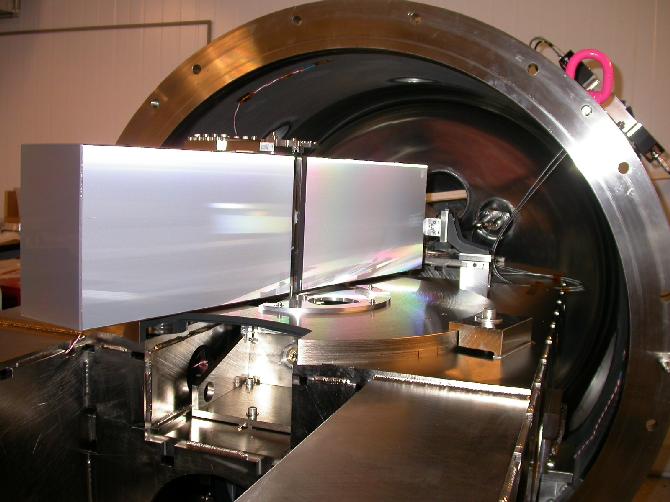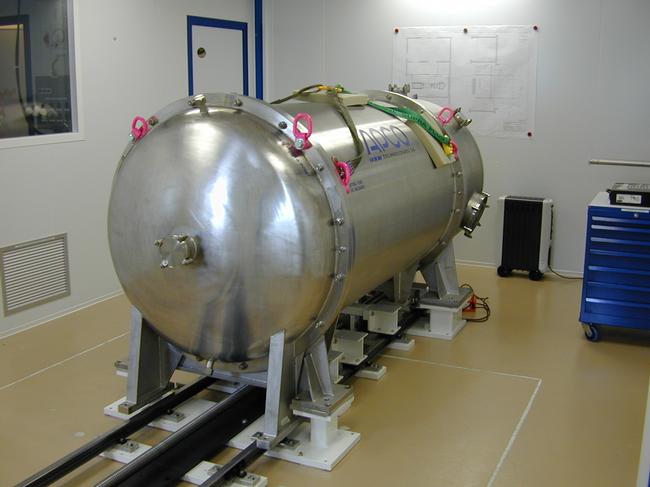'Super Earth': 50 New Planets Discovered, One May Support Life

More than 50 new alien planets — including one so-called super-Earth that could potentially support life — have been discovered by an exoplanet-hunting telescope from the European Southern Observatory (ESO).
The newfound haul of alien planets includes 16 super-Earths, which are potentially rocky worlds that are more massive than our planet. One in particular - called HD 85512 b - has captured astronomers' attention because it orbits at the edge of its star's habitable zone, suggesting conditions could be ripe to support life.
The exoplanet findings came from observations from the High Accuracy Radial velocity Planet Searcher instrument, or HARPS. The HARPS spectrograph is part of ESO's 11.8-foot (3.6-meter) telescope at the La Silla Observatory in Chile.
The potentially habitable super-Earth, officially called HD 85512 b, is estimated to be only 3.6 times more massive than Earth, and its parent star is located about 35 light-years away, making it relatively nearby. HD 85512 b was found to orbit at the edge of its star's habitable zone, which is a narrow region in which the distance is just right that liquid water could exist given the right conditions.
"This is the lowest-mass confirmed planet discovered by the radial velocity method that potentially lies in the habitable zone of its star, and the second low-mass planet discovered by HARPS inside the habitable zone," said exoplanet habitability expert Lisa Kaltenegger, of the Max Planck Institute for Astronomy in Germany and Harvard Smithsonian Center for Astrophysics in Boston.
Further analysis of HD 85512 b and the other newfound exoplanets will be able to determine more about the potential existence of water on the surface.
"I think we're in for an incredibly exciting time," Kaltenegger told reporters in a briefing today (Sept. 12). "We're not just going out there to discover new continents — we're actually going out there to discover brand new worlds."
The HARPS spectrograph is designed to detect tiny radial velocity signals induced by planets as small as Earth if they orbit close to their star.
Astronomers used HARPS to observe 376 sunlike stars. By studying the properties of all the alien planets detected by HARPS so far, researchers found that approximately 40 percent of stars similar to the sun is host to at least one planet that is less massive than the gas giant Saturn.
Astronomers have previously discovered 564 confirmed alien planets, with roughly 1,200 additional candidate worlds under investigation based on data from the Kepler space observatory, according to NASA's Jet Propulsion Laboratory in Pasadena, Calif.
Atmosphere Detected :
The instrument is built to obtain very high long term radial velocity accuracy (on the order of 1 m/s). To achieve this goal, HARPS is designed as an echelle spectrograph fed by a pair of fibres and optimised for mechanical stability. It is contained in a vacuum vessel to avoid spectral drift due to temperature and air pressure variations. One of the two fibres collects the star light, while the second is used to either record simultaneously a Th-Ar reference spectrum or the background sky. The two HARPS fibres (object + sky or Th-Ar) have an aperture on the sky of 1"; this produces a resolving power of 115,000 in the spectrograph. Both fibres are equipped with an image scrambler to provide a uniform spectrograph pupil illumination, independent of pointing decentering. The spectral range covered is 378nm-691nm, distributed over the echelle orders 89-161. As the detector consists of a mosaic of 2 CCDs (altogether 4k x 4k, 15 microns pixels), one spectral order (N=115, from 530nm to 533nm) is lost in the gap between the two chips.
HARPS produces a signal-to-noise ratio of 110 per pixel at 550nm for a Mv=6, G2V star, in 1 minute integration time (1" seeing, airmass = 1.2). When using the Simultaneous Thorium Reference Method (which is the standard mode for achieving the highest accuracy radial velocities) this signal-to-noise ratio should be sufficient to achieve a photon noise error on the radial velocity determination of about 0.90 m/s. Taking into account errors introduced by the guiding, focus, and instrumental uncertainties, a global radial velocity accuracy of about 1m/s RMS is achieved. This is attained for spectral type later than G and for non-rotating stars (v sin i < 2km/s).
In simultaneous Th-Ar mode, HARPS users should strictly follow the calibrations foreseen by the Calibration Plan, which includes a number of bias, flat field and Th-Ar exposures taken before the night.
HARPS is equipped with its own pipeline (installed at La Silla). This pipeline provides the visiting astronomer in near real-time with extracted and wavelength calibrated spectra in all observing modes. When the Simultaneous Thorium reference method is applied, the pipeline delivers precise radial velocities (RV, relative to the solar system barycentre) for late type stars whose RV is known within 1-2km/s, provided that a set of standard calibrations has been executed in the afternoon.
www.keralites.net         |
To subscribe send a mail to Keralites-subscribe@yahoogroups.com.
Send your posts to Keralites@yahoogroups.com.
Send your suggestions to Keralites-owner@yahoogroups.com.
To unsubscribe send a mail to Keralites-unsubscribe@yahoogroups.com.
Homepage: www.keralites.net













No comments:
Post a Comment